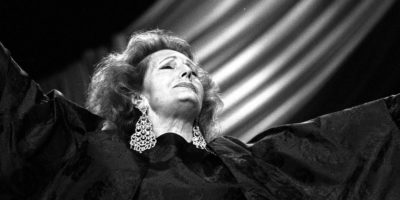
Photo by NARA, College Park, Wikimedia Commons
Top 10 Things to know about the Japanese occupation of the Philippines
The Japanese settled in the Philippines in the twentieth century during the Second World War as a hiding place. The Japanese had attacked provoked the united states of America by attacking the U.S navy force military base, Pearl Harbour. The Japanese began occupying the Philippines to hide from the immediate retaliation by the American forces. The Japanese occupied the Philippines to avoid a potential war against America. They wanted to take control of the oil ahead of the European nations and America. The Japanese saw an opportunity in the second world war to control the oil, rubber, and other important raw materials, as the European nations fought each other.
Below are the top ten things to know about the Japanese occupation of the Philippines.
1. The period of occupation

Photo by Imperial Japanese Navy. Wikimedia Commons
The Japanese launched an attack on the Philippines in December 1941 after they had just attacked the United States navy base. Japanese forces launched simultaneous attacks on the Philippines cities including Manila’s outskirts, they moved to Lingayen Gulf capturing major cities in the country over a short. The Japanese army leader prevented the destruction of Manila city in the Philippines by announcing that it was an open city to occupy. The Japanese took over the Philippines in the early days of January 1942. The Philippine General Douglas McArthur fled with his army away from the superior Japanese army. Japan captured thousands of American and Philippine troops in the Philippines and forced them to a long-distance walk to prison where many died on the way. The Japanese had taken over the Philippines officially and occupied the majority of the land.
2. Establishment of the Philippine Commission
The Japanese took over the Philippine government and implemented new tax policies and political rules that oppressed the people of the Philippines. The Filipinos were suffering under Japanese rule and the leaders from abroad sought ways to reduce the suffering. Jorge Vagas one of the respected Filipino officials led the formation of the executive committee that would represent the people to the Japanese government to mitigate people’s suffering. Several officials were elected in an election that was held and they formed a commission that would help the country to freedom. The commission was tasked with making the constitution with the Filipinos who were free and driven towards national freedom.
3. An attempt to resist the Japanese occupation

Author is unknown. Wikimedia Commons
Although the Japanese occupation of the Philippine cities was easy, they eventually encountered resistance from the secret groups in the Philippines. The Philippine guerrilla movements and underground movements were the major movements that continued to grow over time despite the opposition from the Japanese. The guerrilla movement was so strong that the Japanese formed a bureau that would stop the movement. However, the guerrilla movement had grown in numbers and popularity and the Japanese could not prevent it any longer. The movement had more than two hundred and fifty thousand active members whose role was to eliminate the Japanese. The effectiveness of the movement was evident when the Japanese were contained in the nation as they could only occupy a fraction of the country’s provinces.
4. The Japanese government in Philippine
The Japanese took over the Philippine cities without a fight and promised independence to the people of the Philippines. However, the initial promise changed drastically after occupation and settling in the country. The Japanese formed their government in the foreign nation and continued to rule over the Philippines until 1943 when the Philippines was declared an independent republic. The declaration came after pressure from the Philippines’ request from the leaders who made up the commission. However, the Philippines were politically oppressed as they were only allowed to have a single political party which was monitored and managed by the Japanese. Despite the oppression and strict supervision, many Filipinos worked against the Japanese rule and remained loyal to the united states of America.
5. Formation of the Philippine Republic

Imperial general headquaters. Photo courtesy of Wikimedia Commons
An election was held on the eve of 1944 and Jose Lauren became the president of the second republic of the Philippines, the first republic president being Aguinaldo. After the elections, the Filipinos defiantly inaugurated the newly elected president in front of the government offices in the city of Manila. During the inauguration, the Filipinos hoisted their national flag and sang the national anthem in the eyes of the oppressors. the Japanese wanted to gain the trust of the Filipinos and therefore supported the presidency through Japanese propaganda. The Japanese helped in publicizing the message that suggested that the people of the Philippines were independent. They made the message available to the general public through posters, movies, and adverts. The efforts to win the trust of the Philippines failed as the Japanese had oppressed the locals for some time.
6. The return of General Douglas McArthur
The Japanese takeover of the Philippines led to several Filipino fleeing away including the leaders such as McArthur who fled to Australia. The united states of America and the allied nations in conjunction with the Filipinos abroad launched attacks in Philippine cities on the border. American forces began bombing the cities that were initially occupied by the Japanese taking over from the outskirts as they moved interior. A bombing that took place in less than three months led to the American victory in the city of Leyte on the shores of the Philippines. The American navy forces continued attacking the Japanese on the shore, as the Japanese retaliated with similar counterattacks in a battle that led to the deaths of thousands of forces from each side. However, the Japanese were not up to the task as the united states of America won the battle of Leyte marking the beginning of the downfall of the Japanese in the Philippines. The general announced his return to the country after he landed on the soil.
7. The battle of Leyte offshore
The united states of America continued with its campaign to help the Philippines and liberate them from the hands of their oppressor. They started the bombing from the shore of Leyte and continued to the land. McArthur had returned and found a new government led by president Osmena who had taken over after the death of president Quezon. The battle of Leyte on the land was deadly for the Japanese who were trapped in the country and had little chance of surviving. The determined American troops landed on the desperate Japanese army killing an entire garrison of more than fifty thousand men.
8. The Battle of Leyte in the Sea

The battle of Leyte. Author is unknown. Wikimedia Commons
According to history, the naval battle of Leyte was the greatest navy battle in the second world war and history. The battle lasted for five days and led to several deaths of the Japanese navy forces who were outnumbered by the American and Australian navy forces. The battle began on October 22 1944 after the American and Australian forces landed in Leyte and were met with resistance from the Japanese naval troops. The organized American and Australian naval troops captured and sank the best Japanese ships including the famous Musashi and Yamato. The battle ended after the U.S. troops bombed and sank the Japanese ships that had a crew of more than two thousand people.
9. Battle of Luzon

Battle of Luzon. Photo by Wikimedia Commons
The battle of Leyte was the turning point for the people of the Philippines as the Americans gave the Philippines the power to rule over themselves and were free from Japanese rule. Therefore the Filipinos were free and independent but there were still almost half a million Japanese residing in the country. Most of the Japanese had settled in Luzon where they were constantly fighting the guerrilla movement rebels. The Japanese appeared to be winning the battle because they had numbers. The U.S. government was determined to liberate the Filipinos and therefore engaged the Japanese in Luzon in the battle of Luzon. The Japanese surrendered after suffering huge casualties.
10. The aftermath of the battle of Manila
There were several battles before the liberation of the Philippines but the battle of Manila was the worst because of the casualties. The Japanese troops stormed into the city of manila slaughtering every person they came across. After the battle, the city of Manila was a bloody city with casualties ranging from women, children, and elderly people in the region. The Japanese troops were murdered from every corner of the city including private homes, churches, and marketplaces. They killed people like insects without considering those who could not defend themselves. The battle of Manila was the most chaotic and disturbing in the country before liberation.
Planning a trip to Paris ? Get ready !
These are Amazon’s best-selling travel products that you may need for coming to Paris.
Bookstore
- The best travel book : Rick Steves – Paris 2023 – Learn more here
- Fodor’s Paris 2024 – Learn more here
Travel Gear
- Venture Pal Lightweight Backpack – Learn more here
- Samsonite Winfield 2 28″ Luggage – Learn more here
- Swig Savvy’s Stainless Steel Insulated Water Bottle – Learn more here
Check Amazon’s best-seller list for the most popular travel accessories. We sometimes read this list just to find out what new travel products people are buying.









